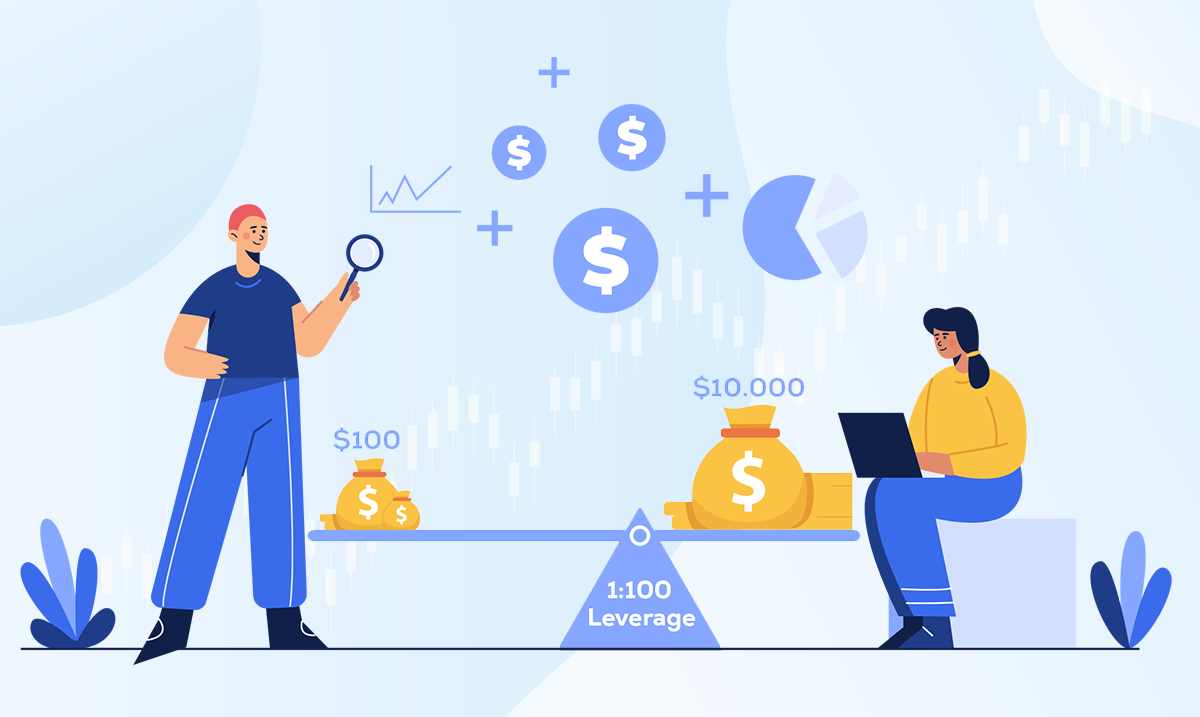Leverage in the stock exchange and financial market: what it is and how it works.


The work of the exchange or stock market is quite diverse and interesting. This is not surprising, because if you delve into all the processes of such earnings, you need to understand what leverage is on Binance or leverage on the exchange, leverage in the stock market. Indeed, information about what this is will help to earn well.
So, leverage in simple terms is just a financial instrument. It will help if earnings go through an exchange. In this case, not only exchanges are suitable, but also Binance.
What is leverage?

So, what is it: leverage is called leverage. This tool allows a trader to use funds (borrowed) to improve their positions in the market. With its help, an investor can invest significantly more funds than they have available, which increases potential profit, but also risks. This is a popular tool in both the stock and exchange markets, especially among experienced traders aiming to enhance the profitability of their operations.
Leverage is called the tool that allows you to significantly increase your investments. In simple terms, leverage allows an investor to trade an amount significantly exceeding their own investments. Similar to borrowed money, this loan is specifically aimed at increasing one's positions in the market or exchange. It is a kind of "loan" that a broker provides to a trader to carry out a transaction. The larger the leverage, the smaller the percentage of their own funds the investor puts into the transaction.

To understand how it works, consider an example. For instance, a trader has $1,000 and uses a leverage of 1:10. This means that for their $1,000, the broker provides $9,000, and the trader trades for $10,000. Therefore, they can already invest and invest. If the asset price increases by 1%, the trader's profit will be 1% of $10,000, which is $100. Without using leverage, they would have earned only $10. Of course, in reality, everything looks different.
The principle of leverage operation

Leverage has its understandable functions. The principle of operation of such a tool is also maximally simple. The broker provides the trader with borrowed funds, with which they can conduct larger transactions. However, for this to happen, the trader must have a "margin" — the amount they invest as a guarantee in case of losses. The margin serves as a kind of "insurance" for the broker and is defined as a percentage of the transaction amount. In other words, without insurance, no trader can count on this.
Leverage, as a tool, has its own concepts (on which its principle of operation is based). What is being discussed:
-
First of all, you need to study the topic of margin. This is the amount that the trader invests as collateral to secure their positions.
-
Based on this concept, you need to learn about margin calls. This is a broker's requirement to top up the account if losses from the transaction reach the margin level.
-
You also need to study the topic of liquidation. This is the forced closing of a transaction by the broker when there are insufficient funds in the account.

This tool has its advantages and some disadvantages. The use of leverage can be both beneficial and risky. So, leverage has its advantages:
-
Overall, such leverage is needed to obtain potential profit. The trader can earn more by investing smaller amounts.
-
Moreover, it gives more chances to earn on various markets. Leverage is available on the stock, currency, commodity, and cryptocurrency markets.
-
One cannot forget such an advantage as strategy flexibility. The ability to use leverage allows for implementing more complex strategies to maximize income.
One cannot forget about certain disadvantages. Generally, these are high risks. Potential losses also increase proportionally to the leverage. Moreover, one must remember that there are risks of margin calls. In unfavorable price changes, the broker may require an account top-up. When talking about disadvantages, there is also dependence on volatility. High leverage is particularly risky in volatile markets.
What types of leverage are there?

Leverage has its own features. There are also various types of companies that can provide leverage. What is meant:
-
There is a so-called low leverage (1:2 - 1:5). The least risky leverage, most often used by beginner traders.
-
There is also medium leverage (1:10 - 1:50). A popular choice among experienced traders in the stock and currency markets.
-
There is also high leverage (1:100 and above). Used in highly volatile markets like Forex or cryptocurrencies. This is a high-risk strategy.
Each of these types can be useful for many traders. However, each type has its own features that need to be considered.
Read also
- Ukrainians can access budget eggs - where to save significantly
- eOselya — who cannot qualify for affordable lending
- Koreans will build a waste incineration plant in Odesa - what are the timelines
- Problematic dollars — which banknotes cannot be exchanged
- Discounts on products up to 55% — what is offered at Silpo significantly cheaper
- Impressive in price and high demand — which silver grade is the most expensive









